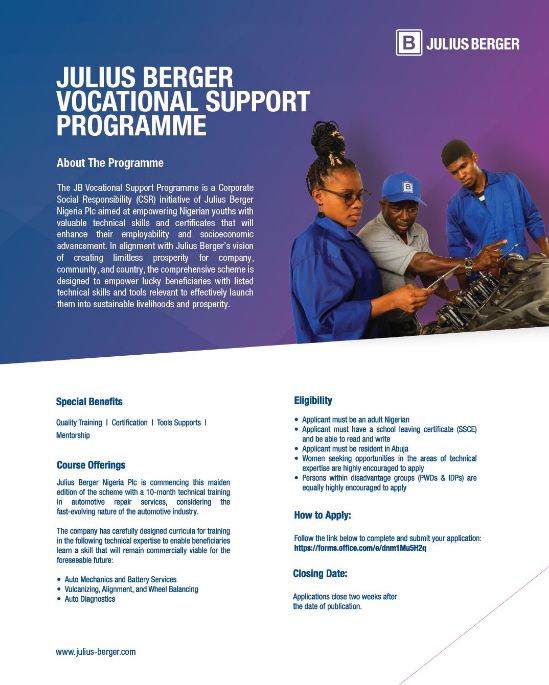List of All Programming Languages and Their Meanings| Are you a software developer or website developer here are the list of programming languages commonly used in the industry: It may help you in the future. Read through
All Programming Languages
As a software developer, it’s essential to stay adaptable and continuously learn new languages and technologies to meet the evolving demands of the industry.
The Birth of Programming Languages
The journey of programming languages began in the 1950s, marking the dawn of a new era in technology and computation. Fortran, the trailblazer, set the stage for the development of high-level programming languages, designed primarily to simplify complex mathematical and scientific computations.
This era was characterized by the need to transition from cumbersome machine and assembly languages to more abstract forms of coding, enabling programmers to write more efficient and less error-prone codes. As computing needs grew and diversified, so did the landscape of programming languages.
Languages such as COBOL emerged, focusing on business data processing, and signaling the start of specialization in programming languages to cater to specific fields. This period was a pivotal moment in technology, as it laid the foundational principles and paradigms that would guide the development of future generations of programming languages.
It was a time of exploration and innovation, where the primary goal was to make programming more accessible and manageable, leading to the rich and diverse ecosystem of programming languages we see today. This transformation from basic, low-level instructions to complex, high-level languages represented a significant leap forward in making technology more adaptable and useful across various domains.
- Python: Known for its simplicity and readability, Python is a versatile language used in web development, data analysis, machine learning, artificial intelligence, scientific computing, and automation.
- JavaScript: As the backbone of web development, JavaScript is essential for creating interactive and dynamic websites. It’s also widely used in front-end and back-end development frameworks like React, Angular, and Node.js.
- Java: Java is a robust, object-oriented language used in a variety of applications, including web development, mobile app development (Android), enterprise software, and large-scale systems.
- C#: Developed by Microsoft, C# is a powerful language used primarily in Windows application development, game development (with Unity), and enterprise software.
- C++: Known for its speed and efficiency, C++ is used in system programming, game development, embedded systems, and performance-critical applications.
- PHP: PHP is a server-side scripting language commonly used in web development to create dynamic websites and web applications. It’s often paired with databases like MySQL or PostgreSQL.
- Ruby: Ruby is a dynamic, object-oriented language known for its simplicity and productivity. It’s commonly used in web development with the Ruby on Rails framework.
- Swift: Developed by Apple, Swift is the primary language for iOS and macOS app development. It’s known for its safety, speed, and modern syntax.
- Kotlin: An officially supported language for Android development, Kotlin is gaining popularity for its conciseness, safety features, and interoperability with Java.
- TypeScript: TypeScript is a superset of JavaScript that adds static typing and other features to improve developer productivity and code quality in large-scale applications.
- Go (Golang): Developed by Google, Go is a statically typed, compiled language known for its simplicity, efficiency, and built-in support for concurrency.
- Rust: Rust is a systems programming language focused on safety, concurrency, and performance. It’s often used in projects where memory safety and performance are critical, such as operating systems and game engines.
- SQL: SQL (Structured Query Language) is used to manage and manipulate relational databases. It’s essential for querying, updating, and managing data in databases like MySQL, PostgreSQL, SQL Server, and Oracle.
- HTML/CSS: While not traditional programming languages, HTML (Hypertext Markup Language) and CSS (Cascading Style Sheets) are essential for building and styling web pages.
- Shell Scripting (Bash): Shell scripting languages like Bash are used for automating tasks and scripting system administration tasks in Unix/Linux environments.
Understanding Syntax and Semantics
In the realm of programming languages, grasping the concepts of syntax and semantics is paramount. Syntax is the structured set of rules that governs how programs are written, determining the correct sequence and combination of symbols that are acceptable.
On the other side, semantics delve into the meanings conveyed by these symbols and structures, essentially what actions the computer will perform when executing the code. For instance, while Python utilizes strict indentation to denote blocks of code, indicating how statements are grouped together, languages like C or Java employ curly braces for this purpose.
This variance in syntax underlines the uniqueness of each programming language, influencing how developers approach problem-solving and code organization. Similarly, the semantics of a language dictate how various constructs interact, such as how loops iterate over sequences or how functions are called and what they return.
Understanding these intricate details is critical, not only for ensuring that the code compiles and runs as expected but also for leveraging the full potential of the programming language to create efficient, readable, and maintainable software.
This exploration into the structure and meaning behind programming languages is a fundamental step for any developer, laying the groundwork for mastering the art of coding.
The Titans of Industry: C, Java, and Python
C, Java, and Python stand as monumental pillars within the programming community, each contributing uniquely to the technological landscape.
C, established in the early 1970s, is revered for its direct manipulation of hardware, offering unparalleled speed and system-level access, which is why it is often chosen for operating systems, embedded systems, and high-performance applications.
Java, developed by Sun Microsystems in the mid-1990s, adheres to the WORA (Write Once, Run Anywhere) philosophy, making it the go-to choice for cross-platform applications. Its robust ecosystem, including the Android SDK, has made it indispensable for mobile app development as well as large-scale enterprise environments.
Python, on the other hand, emerged as a highly flexible and intuitive language, prioritizing readability and concise coding practices. Its simplicity does not detract from its power; it is a force to be reckoned with in data analysis, artificial intelligence, scientific computing, and web development.
These languages, with their distinct characteristics, have not only shaped the current programming paradigm but also continue to influence the development of new languages and technologies.
Their enduring relevance in both educational and professional spheres underscores their foundational role in the digital age, guiding programmers through the complexities of software development with their well-established principles and communities
Navigating the World of Web Development Languages
In the domain of web development, the collaboration of HTML, CSS, and JavaScript forms the core foundation for front-end design, enabling the creation of visually compelling and interactive websites.
HTML provides the structure, CSS dictates the style, and JavaScript introduces interactive elements, making them indispensable tools for developers aiming to enhance user experience. On the flip side, the landscape of back-end development is dominated by languages such as PHP, Ruby, and Python. Each of these languages offers unique functionalities:
PHP is widely recognized for its powerful server-side scripting capabilities; Ruby is praised for its simplicity and productivity, particularly with the Ruby on Rails framework; and Python is celebrated for its versatility, finding its place in web development through frameworks like Django and Flask.
Understanding the synergy between front-end and back-end languages is vital for developers to build comprehensive, fully-functional web applications. This blend of languages allows for the creation of sophisticated web services and applications that can meet the demands of today’s tech-savvy users.
The intricacies of how these languages interact within the web development ecosystem underscore the importance of a multifaceted approach to website creation, emphasizing the need for developers to have a broad skill set in the ever-evolving landscape of web technologies.
The Rise of Mobile App Development Languages
As smartphones continue to dominate our daily lives, the landscape of mobile app development has seen rapid evolution. Swift and Kotlin emerge as front-runners in this space, catering specifically to iOS and Android platforms, respectively. Swift, introduced by Apple, is designed for robustness and speed, streamlining the development process for iOS apps with its concise syntax and interactive coding environment.
Kotlin, on the other hand, is endorsed by Google for Android development. It addresses many of the pitfalls of Java, offering a more efficient, less verbose coding experience. Both languages are engineered with modern features and safety in mind, ensuring applications are not only fast but also secure and reliable.
Beyond these, other technologies play pivotal roles in mobile development. For instance, React Native and Flutter allow for cross-platform mobile development, enabling developers to write code once and deploy it on both iOS and Android platforms.
This approach has revolutionized the way apps are developed, reducing time and resources while maintaining high performance and native-like experience.
As mobile devices become more powerful and integral to our lives, the choice of development language and framework becomes crucial. Swift and Kotlin, along with cross-platform solutions, offer developers the tools to create innovative, user-friendly applications that tap into the full potential of modern mobile hardware and software ecosystems.
Emerging Languages and Future Trends
As we navigate the ever-evolving landscape of technology, the emergence of new programming languages reflects the industry’s dynamic nature and the shifting needs of developers and businesses alike.
Languages such as Rust, designed for memory safety without sacrificing performance, and Go, known for its simplicity and efficiency in building scalable web applications, are rising in prominence. TypeScript, an extension of JavaScript that adds static types, is becoming a staple for developers seeking to create more reliable and maintainable web applications.
These languages not only address current technological challenges but also pave the way for future innovations. With the rise of machine learning and blockchain technology, there’s a growing demand for languages that can efficiently handle these complex domains.
As such, specialized languages are being developed, underscoring the importance of adaptability and continuous learning in the field of programming. This trend towards innovation and specialization signals a future where programming languages are ever more tailored to the nuanced requirements of modern computing, highlighting the critical role of language choice in driving forward technological advancements and solving tomorrow’s problems
Choosing the Right Language for Your Project
Deciding on the ideal programming language for a specific project involves weighing various critical considerations. Key among these is the nature of the application in question—whether it’s for web development, mobile apps, system programming, or data analysis.
Each domain has languages that naturally excel, influenced by their design principles, libraries, and community support. Another pivotal aspect is the deployment platform; languages like Swift are tailor-made for iOS, while Kotlin is the go-to for Android development.
Developer proficiency and project timelines also play significant roles. A language that the development team is familiar with can drastically reduce development time and increase efficiency.
Additionally, consider the long-term maintenance and scalability of the project. Some languages offer more straightforward debugging and refactoring capabilities, which can be beneficial as the project grows.
Engaging with the community through forums or reading documentation can provide insights into common pitfalls and best practices. Ultimately, the choice should align with the project’s goals, team skills, and the desired performance outcomes, ensuring that the development process is as smooth and efficient as possible.
Overcoming Obstacles: Challenges Faced by Software Developers and Strategies for Success



